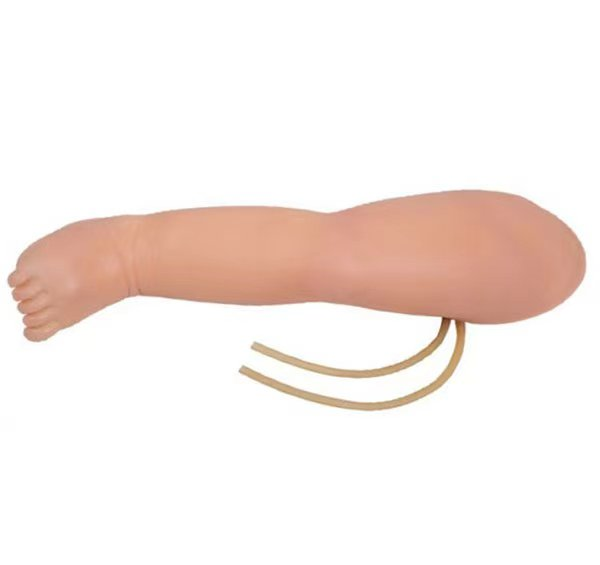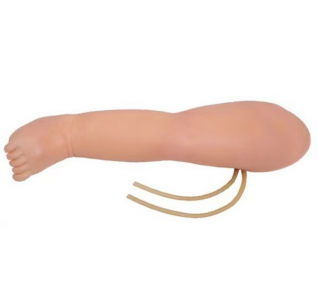Operating an infant's leg venipuncture model is a vital part of medical education and training, and the following are detailed steps on how to properly operate an infant's leg venipuncture model:

1. Prepare
Confirm the model: Ensure that the selected infant leg venipuncture model is designed according to the anatomical characteristics of the infant leg, has a high degree of imitation, and the skin texture on the model is clear, and the material is soft and elastic.
Environment preparation: Choose a clean, uncluttered, well-lit environment to operate in so that the anatomical marks and vein distribution on the model can be clearly seen.
2. Locate the puncture point
Find anatomical marks: Determine the location of the puncture point according to the anatomical marks on the model, such as the large saphenous vein, the small saphenous vein, etc.
Prepare the puncture tool: Choose a needle suitable for infantile venipentesis and ensure that it is clean and sterile.
3. Puncture operation
Disinfection: A simulated disinfectant is used to disinfect the skin around the puncture site to simulate the sterile environment in real operation.
Insert the needle: Insert the needle into the selected vein at an appropriate Angle (such as 30°~45°), taking care to keep the needle stable and avoid shaking.
Observation: When the needle enters the vein, a clear sense of frustration should be felt, and if the puncture is correct, the model will simulate blood return. This is the key indicator to determine whether the puncture is successful.
4. Secure and perform subsequent operations
Secure the needle: Once the puncture is successful, use a simulated infusion patch or other holding tool to secure the needle to the model to prevent it from moving or falling out.
Simulated infusion or blood drawing: Depending on training needs, infusion or blood drawing operations can be simulated to further consolidate skills.
5. Precautions
Maintain sterility: The principle of sterility should always be observed throughout the operation to avoid contamination and cross-infection.
Gentle handling: The baby's skin and blood vessels are relatively fragile, so they should be kept gentle during manipulation to avoid overexertion or damage to the model.
Repeated practice: Since venipuncture requires a certain amount of skill and experience, repeated practice is recommended to improve operational skills.
Through the above steps and precautions, it is possible to correctly operate the infant leg venipunction model and provide strong support for medical education and training.

